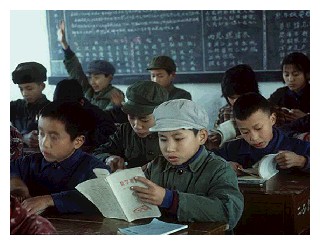|
 Pick up a standard psychology textbook -
especially from the 1960s and 1970s and you will probably find learning defined as a
change in behaviour. In other words, learning is approached as an outcome - the end
product of some process. It can be recognized or seen. Pick up a standard psychology textbook -
especially from the 1960s and 1970s and you will probably find learning defined as a
change in behaviour. In other words, learning is approached as an outcome - the end
product of some process. It can be recognized or seen.
The depth or nature of the changes involved are likely to be
different. Some years ago Säljö (1979) carried out a simple, but very useful piece of
research. He asked a number of adult students what they understood by learning. Their
responses fell into five main categories:
Learning as a quantitative
increase in knowledge. Learning is acquiring information or ‘knowing a lot’.
Learning as memorising.
Learning is storing information that can be reproduced.
Learning as acquiring facts,
skills, and methods that can be retained and used as necessary.
Learning as making sense or
abstracting meaning. Learning involves relating parts of the subject matter to each other
and to the real world.
Learning as interpreting and
understanding reality in a different way. Learning involves comprehending the world by
reinterpreting knowledge. (quoted in Ramsden 1992: 26)
As Paul Ramsden
comments, we can see immediately that conceptions 4 and 5 in are qualitatively different
from the first three. Conceptions 1 to 3 imply a less complex view of learning. Learning
is something external to the learner. It may even be something that just happens or is
done to you by teachers (as in conception 1). In a way learning becomes a bit like
shopping. People go out and buy knowledge - it becomes their possession. The last two
conceptions look to the 'internal' or personal aspect of learning. Learning is seen as
something that you do in order to understand the real world.
n the five categories that Säljö identified we can see
learning appearing as a process - there is a concern with what happens when the learning
takes place. In this way, learning could be thought of as 'a process by which behaviour
changes as a result of experience' (Maples and Webster 1980 quoted in Merriam and
Caffarella 1991: 124). Such a focus on process takes us into the realm of learning
theories - ideas about how or why change occurs. Here we will focus on four different
orientations (the first three taken from Merriam and Caffarella (1991). As with any
categorization of this sort the divisions are a bit arbitrary: there could be further
additions and sub-divisions to the scheme, and there a various ways in which the
orientations overlap and draw upon each other.
The four orientations can be
summed up in the following figure:
| Aspect |
Behaviourist |
Cognitivist |
Humanist |
Social
and situational |
| Learning
theorists |
Thorndike,
Pavlov, Watson, Guthrie, Hull, Tolman, Skinner |
Koffka,
Kohler, Lewin, Piaget, Ausubel, Bruner, Gagne
|
Maslow,
Rogers |
Bandura,
Lave
and Wenger, Salomon |
| View
of the learning process |
Change
in behaviour |
Internal
mental process (including insight, information processing, memory, perception
|
A
personal act to fulfil potential. |
Interaction
/observation in social contexts. Movement
from the periphery to the centre of a community of practice
|
| Locus
of learning |
Stimuli
in external environment |
Internal
cognitive structuring |
Affective
and cognitive needs |
Learning
is in relationship between people and environment.
|
| Purpose
in education |
Produce
behavioural change in desired direction
|
Develop
capacity and skills to learn better |
Become
self-actualized, autonomous |
Full
participation in communities of practice and utilization of resources
|
| Educator's
role |
Arranges
environment to elicit desired response
|
Structures
content of learning activity |
Facilitates
development of the whole person |
Works
to establish communities of practice in which conversation and
participation can occur.
|
| Manifestations
in adult learning |
Behavioural
objectives Competency -based education
Skill development and training |
Cognitive
development Intelligence, learning and memory
as function of age
Learning how to learn
|
Andragogy Self-directed learning |
Socialization
Social participation
Associationalism
Conversation
|
Full details of the texts mentioned can be found in the
piece on learning in the encyclopedia of
informal education.
First published September 2002. Last
update: January 31, 2005
|
|
 Pick up a standard psychology textbook -
especially from the 1960s and 1970s and you will probably find learning defined as a
change in behaviour. In other words, learning is approached as an outcome - the end
product of some process. It can be recognized or seen.
Pick up a standard psychology textbook -
especially from the 1960s and 1970s and you will probably find learning defined as a
change in behaviour. In other words, learning is approached as an outcome - the end
product of some process. It can be recognized or seen.